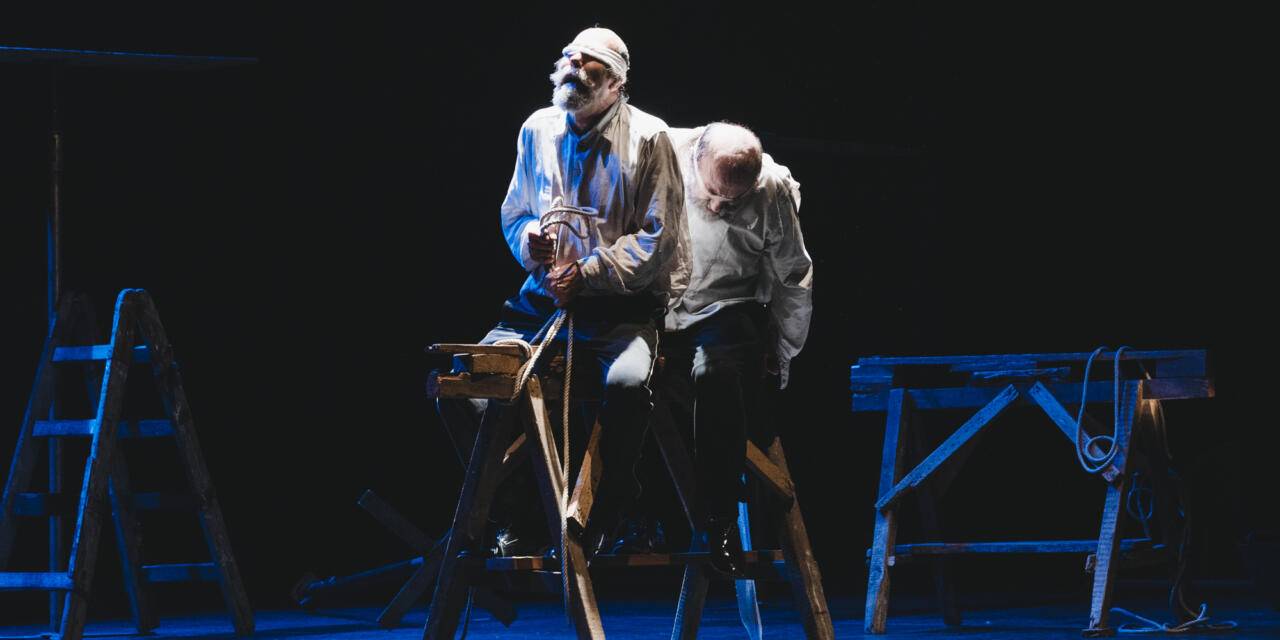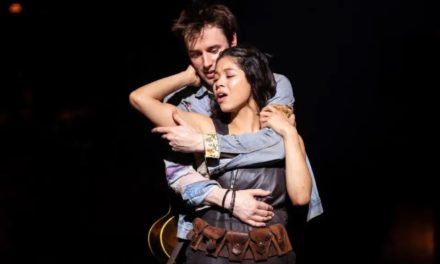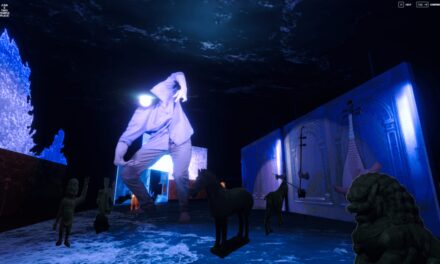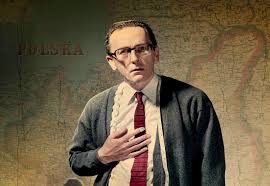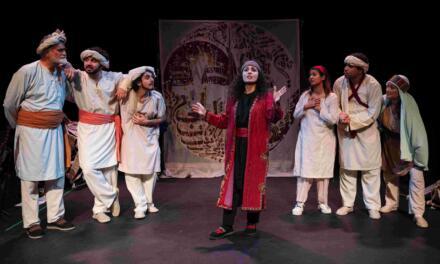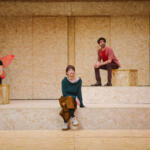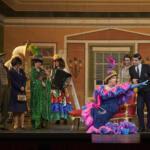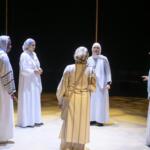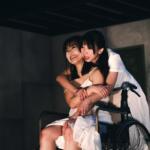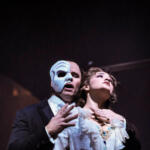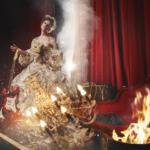La Zaranda are one of Spain’s best kept theatrical secrets. Not because they are not well known or respected in Spain – they have a cult reputation in the Spanish-speaking world with a long history of important tours to Latin America — but rather because they have never really permeated the festival circuit in the Anglophone world. They have played in Europe and the US but perhaps not with the frequency that their innovative theatre deserves. They sit between Ramón del Valle-Inclán’s idea of the esperpento — a grotesque aesthetic that is exquisite in its calculated precision — and Tadeusz Kantor’s ideas of a theatre of death. Founded in Jerez de la Frontera (Andalusia) in 1978, they are an itinerant company — indeed their current name is La Zaranda, Teatro Inestable de Ninguna Parte (La Zaranda, an Unstable Theatre Company from Nowhere). They have a long history of touring work with sets that are functional, imaginative and easily transportable. Their sets — one of the points of contact with Kantor’s theatre — often resemble a workshop filled with the materials that one might expect to see in the backstage area of a theatre. Crucially, their work always engages with folklore, myths, literary traditions and cultural icons. They may no longer be linked to Andalusia – their original name was La Zaranda, Teatro Inestable de Andalucía Baja (La Zaranda, The Unstable Theatre of the Andalusian Lowlands), but the linguistic rhythms of Andalusia run through their productions.
Their newest piece – and I use the ‘they’ intentionally to address the company because of every member seems a key part of the ethos of the piece’s realisation — deploys tropes that those familiar with La Zaranda’s work will recognise. An actor who speculates whether he might come back to life shares the stage with a mirror image of himself; both enter into a dialogue over 80 minutes that seems to evoke moments from a series of canonical works. Both actors have white hair and a beard, a white shirt and black trousers; both seem eerily similar in appearance. The piece might be retitled “An actor (or two) reminisces” for the two elderly performers perform routines that seem to intentionally echo moments from Life is a Dream, Hamlet, King Lear and Waiting for Godot. Is one actor a reflection of the other? An antagonist? His conscience? An audience? One of the strengths of Manual for building a dream is that this is never clarified. It doesn’t need to be for the piece’s energy lies in the gameplay between the two actors. The stage here is presented as a space haunted by ghosts, where past roles are ever present in the memory of the actors who play them and the audience who experience the performance.
Paco de La Zaranda both directs and designs. The stage space is dominated by a mirror that is pulled out to reveal the second actor. A contraption-like bench doubles as a horse, a table, a vehicle. Planks of wood create bridges. Ladders further reinforce the sense of a road to nowhere, a journey that has no fixed destination. Ropes bind the characters both physically and metaphorically. The two wizened actors (Francisco Sánchez — alias Paco de la Zaranda — and Gaspar Campuzano) are in many ways opposites: one wanting stardom and audience adulation; the second more wary of the dangers that a commercial stage can bring. Ruminations on theatre — its purpose, its joys and its miseries — abound. The actors appear suspended in a nowhere space somewhere between the stage and the dressing-room, endlessly recreating routines that create the sense of a loop. A costume rail suggests that roles are ever present and ever changing although archetypes types remain: Sánchez, the grandee, Campuzano always on the search for fame and recognition.
There are a number of digs at what could be seen as the overwhelming bureaucracy that now underpins theatre-making. A nostalgia for a world (did it ever exist?) where theatre was created without endless form filling and audits is evoked by the two actors caught up in a mass of keyboards and computer leads: a generation that may not be empowered by the digital revolution. Eusebio Calonge’s script meanders through these episodes, creating a wafer-thin narrative to hang the duo’s (mis)adventures through theatre history.

Francisco Sánchez and Gaspar Campuzano on the floor with the winged angel/devil (Enrique Bustos) in La Zaranda’s Manual para armar un sueño/Manual for building a dream ©Isabel Cortés Rico
Enrique Bustos — a third performer — in a red winged costume — might be the men’s guardian angel or the devil in disguise. The empty glamour of the red carpet is evoked by the carpet that he literally lays out for the actors. Is it a trap? A form of seduction? The road to ruin? The stage is an ever-mutating space in Manual for building a dream. The boundaries are never clear. Indeed, the stage is constantly refashioned by the three performers across the performance; it mutates into whatever they need it to be. Crosses are removed in the opening moments – perhaps a reference to a medieval stage with a strong religious underpinning. Baskets are thrown around, pointing to rituals and repetition. A chair with wheels and red cloth becomes a throne where status can be acquired, albeit temporarily. Lines are forgotten. Graves are dug. Roles are taken on and then discarded. The actors continue with their performances – baroque-like figures who appear to have stepped out of a fresco, unable to move out of the spiral of the histories and roles they have inherited. The past here is the present and the future. At the play’s end, as the aged actors jump onto the bench as Don Quixote and Sancho Panza, ready for a new adventure, the bench is converted into the horse Rocinante. A theatre of dreams and the uncanny where actor and audience together create a third world that exists between the material and the imaginary.
Manual for a building a dream occupies the space where theatre becomes a space of potential – where elderly bodies take back their youth for an instant, where texts come into dialogue with each other through the frame of meta-theatre, where hope and the possibility of transformation is ever present, and where the audience are reminded that theatre is the space of the ghostly, of endless returns and reruns. Manual for a building a dream — receiving a standing engagement on the opening night of its Barcelona run — serves as a poignant and entertaining embodiment of Herbert Blau’s much quoted observation that “where memory is, theatre is”.
Manual para armar un sueño/Manual for a building a dream played at the Teatre Romea Barcelona from 4 to 16 June 2024 as part of a national tour.
This post was written by the author in their personal capacity.The opinions expressed in this article are the author’s own and do not reflect the view of The Theatre Times, their staff or collaborators.
This post was written by Maria Delgado.
The views expressed here belong to the author and do not necessarily reflect our views and opinions.

